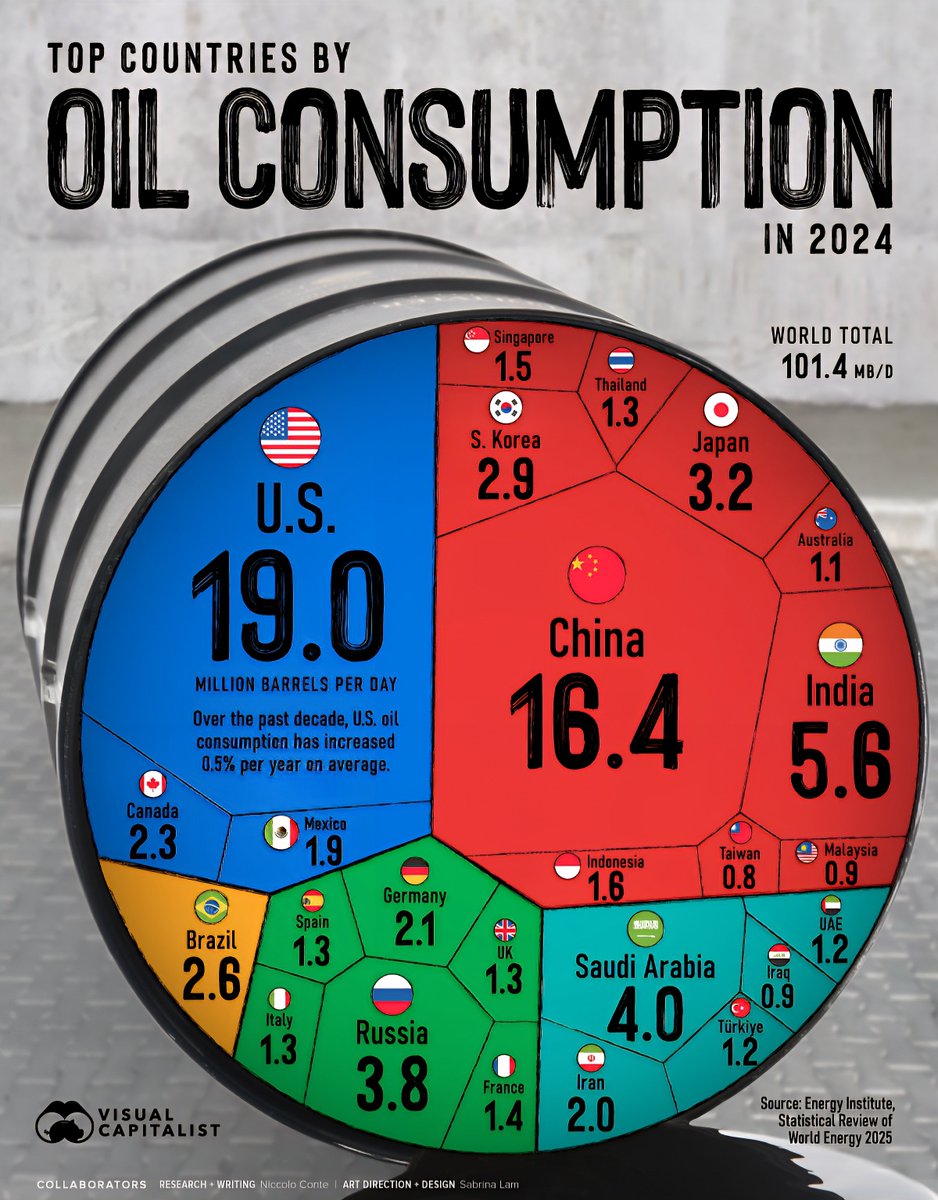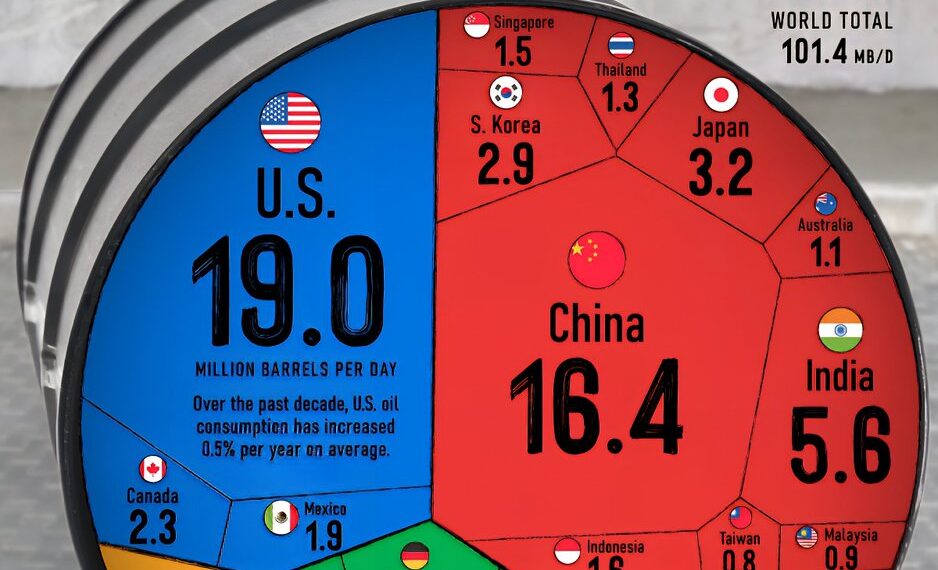Select Language:
The World’s Top 25 Countries by Oil Consumption in 2025

1. United States
Maintaining its position as the largest consumer of oil globally, the United States continues to lead in energy consumption, driven by a vast transportation network, industrial sectors, and a high standard of living. Despite investment in renewable energy sources, demand for oil remains robust to support everything from gasoline to manufacturing.
2. China
China’s rapid economic growth and urbanization have cemented its spot as the second-largest oil consumer in the world. The nation’s booming manufacturing and vehicular sectors significantly boost its oil demand, though recent shifts towards electric vehicles are slowly influencing consumption trends.
3. India
India’s expanding economy, rising middle class, and increasing vehicle ownership have pushed the country into the third position. While efforts are underway to diversify energy sources, oil remains critical to its transportation and industrial sectors.
4. Japan
As an energy-import-dependent nation, Japan’s oil consumption remains high despite aggressive adoption of renewable energy and nuclear power. The country relies heavily on oil for transportation and manufacturing, maintaining a steady demand level.
5. Saudi Arabia
While primarily an oil exporter, Saudi Arabia is also among major consumers globally, with domestic needs driven by vehicle use, industrial activities, and energy production. Its strategic reserves and refining capacity contribute significantly to global oil consumption figures.
6. Russia
Russia’s vast oil reserves make it both a key exporter and a significant consumer domestically. Its sizable transportation network and industrial hubs keep its oil demand strong, despite geopolitical tensions and shifts towards alternative energy.
7. Brazil
Brazil’s growing economy and infrastructure development have increased its oil consumption. The country’s offshore oil production and demand in the transportation sector make it a prominent consumer in Latin America.
8. South Korea
South Korea’s industrial base and technological sector drive high oil consumption rates. As a major manufacturing hub, the country relies heavily on oil imports to sustain its energy needs.
9. Germany
Though focusing heavily on renewable energy, Germany’s industrial and automotive sectors still depend significantly on oil. Its strategic policies aim to reduce reliance but current consumption remains substantial.
10. Canada
Canada’s large resource extraction industry and extensive transportation network contribute to its high oil demand. Despite efforts to boost renewable energy, oil remains vital to its economy.
11. Mexico
Mexico’s petroleum industry and transportation sector fuel its position in global oil consumption rankings. Continued infrastructure development aims to meet domestic energy demand more sustainably.
12. Iraq
In the Middle East, Iraq’s rising population and expanding infrastructure increase its domestic oil use. As an oil-rich nation, it balances export interests with internal consumption needs.
13. United Arab Emirates
The UAE’s rapid urbanization and industrialization have elevated its oil consumption. It remains a key regional player both in oil exports and domestic energy use.
14. Iran
Despite international sanctions, Iran’s large population and energy needs sustain high oil consumption for transportation, power generation, and industry.
15. Indonesia
Indonesia’s growing economy and urban centers have driven increased oil demand. The nation is also investing heavily in alternative energy, with current consumption levels remaining high.
16. France
France’s transportation and industrial sectors are primary consumers of oil, although a shift toward cleaner energy sources is ongoing to meet climate goals.
17. Italy
Italy’s oil consumption is fueled by domestic transportation and industrial activities, with a focus on transitioning to sustainable alternatives.
18. South Africa
With a sizable industrial sector and mining industry, South Africa relies substantially on imported oil to meet its energy needs.
19. Taiwan
High technology manufacturing and transportation infrastructure contribute to Taiwan’s significant oil consumption levels.
20. Spain
Spain’s transportation sector and industrial activities support high oil demand, alongside efforts to enhance renewable energy deployment.
21. Argentina
Argentina’s increasing urbanization and industrial output have elevated its oil consumption. The country is exploring diverse energy sources to reduce reliance on oil.
22. Egypt
Egypt’s expanding urban centers and industrial sector are driving its oil demand, despite national initiatives to develop alternative energy.
23. Thailand
With a thriving manufacturing industry and growing urban population, Thailand remains a key consumer in Southeast Asia.
24. Netherlands
The Netherlands’ strategic location and transportation activities keep its oil consumption relatively high, particularly in logistics and shipping sectors.
25. Pakistan
Pakistan’s rising population and infrastructural development ensure sustained demand for oil, primarily in transportation and power generation.
As global energy patterns continue to evolve in 2025, these countries dominate in oil consumption, each balancing economic growth with environmental and energy transition goals. While some nations are actively decreasing reliance on fossil fuels, the demand for oil remains integral to their economies today.
Note: These figures are based on the latest available data and projections for 2025, reflecting current consumption trends worldwide.






